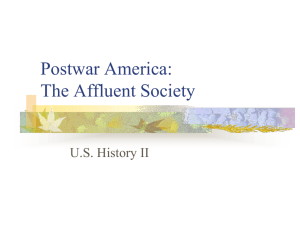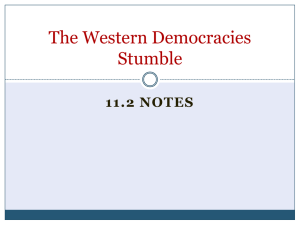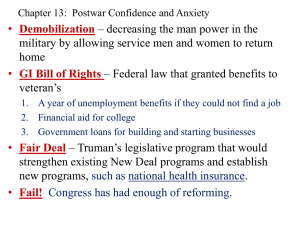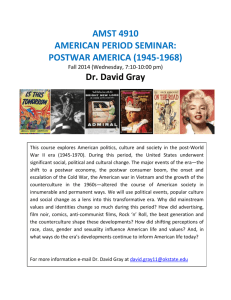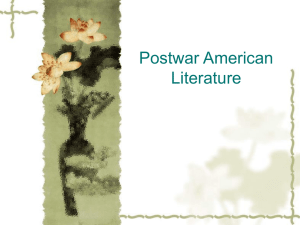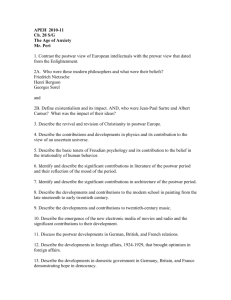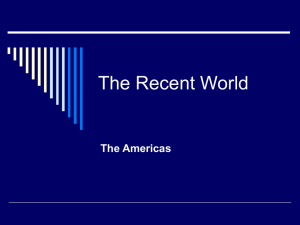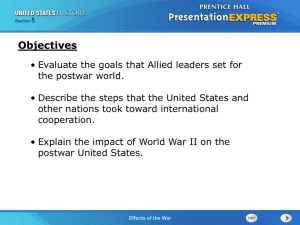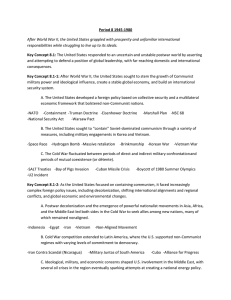A Consumers' Republic
advertisement
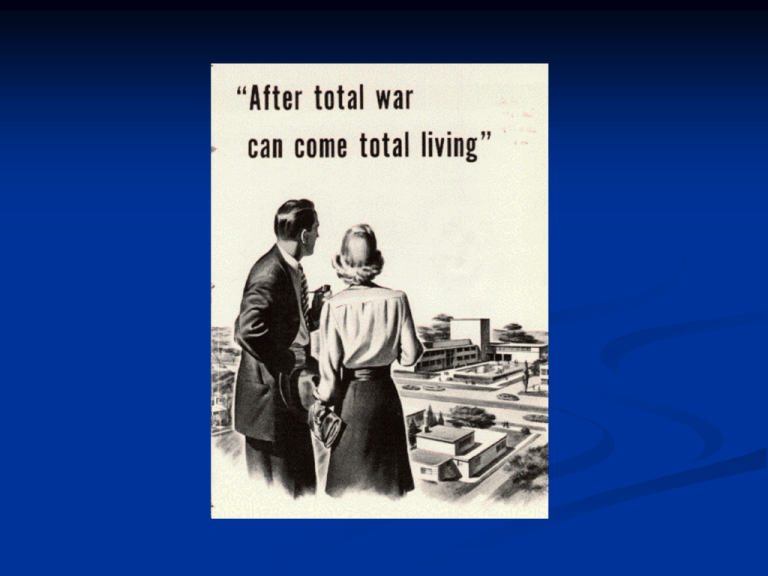
A Consumers’ Republic Suburbanization Development of shopping malls Effects on urban and town centers A “Consumers’ Republic” – what does Cohen mean by this? Elaine Tyler Mar, Homeward Bound: American Families in the Cold War Era Postwar America as a time of “happy days” the elevation of comfort over challenge, safety over risk, and private pleasures over public affairs Postwar American Dream widespread postwar affluence Democratization through shared abundance (Cohen) by 1953, average US family enjoyed twice as much real income as in the 1920s Suburbanization baby boom consumerism set the tone of postwar American life Levittown circa 1950 Dan Ryan Expressway, Chicao Consequences of superhighway development for urban, ethnic neighborhoods suburban sprawl – note dependence on cars Persisting Poverty for Some poverty remained fact of life for millions in the cities and on farms African Americans, who had loyally supported the war and in many cases served in the military, once again confronted grim reality of racism at home FHA, Redlining, and Covenants Images that reflect postwar consumerism Watch clip from In the Suburbs (1957 promotional film for Redbook magazine) Civil Rights Movement and Postwar Racial Conflict Widespread Complacency? After WWII, most Americans turned away from public issues preoccupied with careers and family reform energies responsible for New Deal subsided into complacency spirit of times not reformist but conservative, complacent BUT surface appearance of comfort and complacency hid feelings of anxiety Anti-Communism “Beware, commies, spies, traitors, and foreign agents! Captain America, with all loyal, free men behind him, is looking for you, ready to fight until the last one of you is exposed for the yellow scum you are.” March 1947, Truman issued Exec Order 9835 establishing Federal Loyalty program order provided for loyalty check on all govt employees employees asked whether they provided religious training for their children and what they thought of female chastity By end of Truman’s terms in 1952, 39 states had enacted antisubversion laws and loyalty programs 1947 – series of HUAC hearings to expose communist influence in American life dominated the news probes blurred distinctions between dissent and disloyalty, radicalism and subversion Second Red Scare reflects shift in American cultural and intellectual life dissent no longer safe or acceptable now to be a dissenter, as communistrs like LeSueur were in the 1930s, opened one up to allegations of subversion and disloyalty anticommunist hysteria was both a product of postwar anxiety and, for many, a contributor to it as Hollywood’s reaction shows, one had to be very careful to maintain proper appearances of loyalty and patriotism 1959 Kitchen Debate Consumer Credit installment buying, home mortgages, and auto loans raised Americans’ total private indebtedness in the 1950s from $73 billion to $196 billion First credit card in 1950; AmEx follows in 1958 Hillsdale Shopping Mall, San Mateo, California circa 1960 IN THE SUBURBS (1957) Aerial view of Park Forest, Illinois, 1952 Consumerism meets the Cold War "The Kitchen Debate": Consumerism is the American way To us, diversity, the right to choose, . . . is the most important thing. We don't have one decision made at the top by one government official. . . . We have many different manufacturers and many different kinds of washing machines so that the housewives have a choice. . . . Would it not be better to compete in the relative merits of washing machines than in the strength of rockets? -Vice President Richard Nixon at the opening of the American National Exhibition in Moscow, 1959 (quoted in Elaine Tyler May, Homeward Bound, 1988, 17) Suburban growth and the homecentered American dream social and material consequences of suburbanization William H. Whyte's The Organization Man (1956) Domestic idealism: the family as a haven in an uncertain world "This book is about the organization man. If the term is vague, it is because I can think of no other way to describe the people I am talking about. They are not the workers, nor are they the white-collar people in the usual, clerk sense of the word. These people only work for The Organization. The ones I am talking about belong to it as well. They are the ones of our middle class who have left home, spiritually as well as physically, to take the vows of organization life, and it is they who are the mind and soul of our great self-perpetuating institutions. Only a few are top managers or ever will be. In a system that makes such hazy terminology as "junior executive" psychologically necessary, they are of the staff as much as the line, and most are destined to live poised in a middle area that still awaits a satisfactory euphemism. But they are the dominant members of our society nonetheless. They have not joined together into a recognizable elite--our country does not stand still long enough for that--but it is from their ranks that are coming most of the first and second echelons of our leadership, and it is their values which will set the American temper." --William Whyte, The Organization Man

